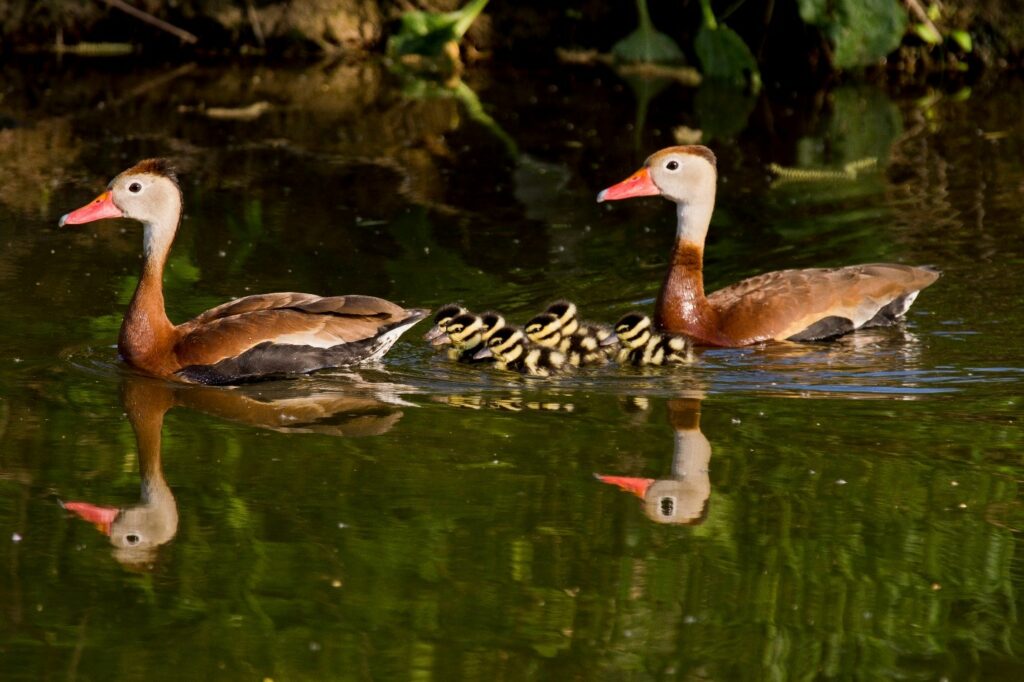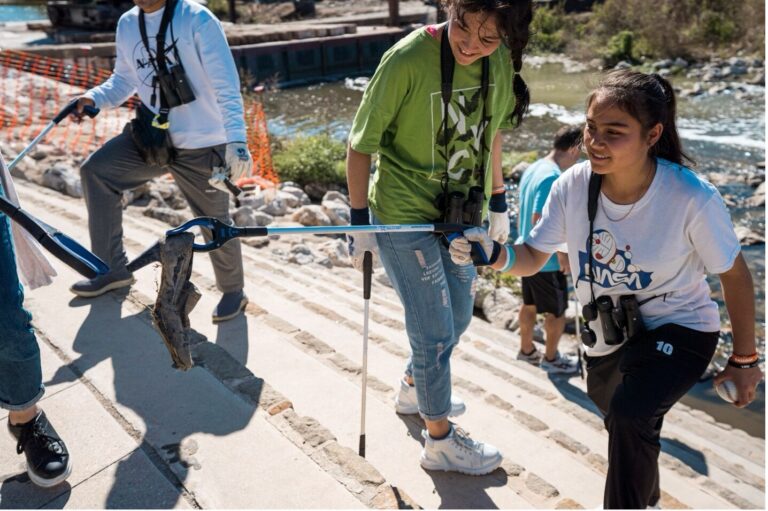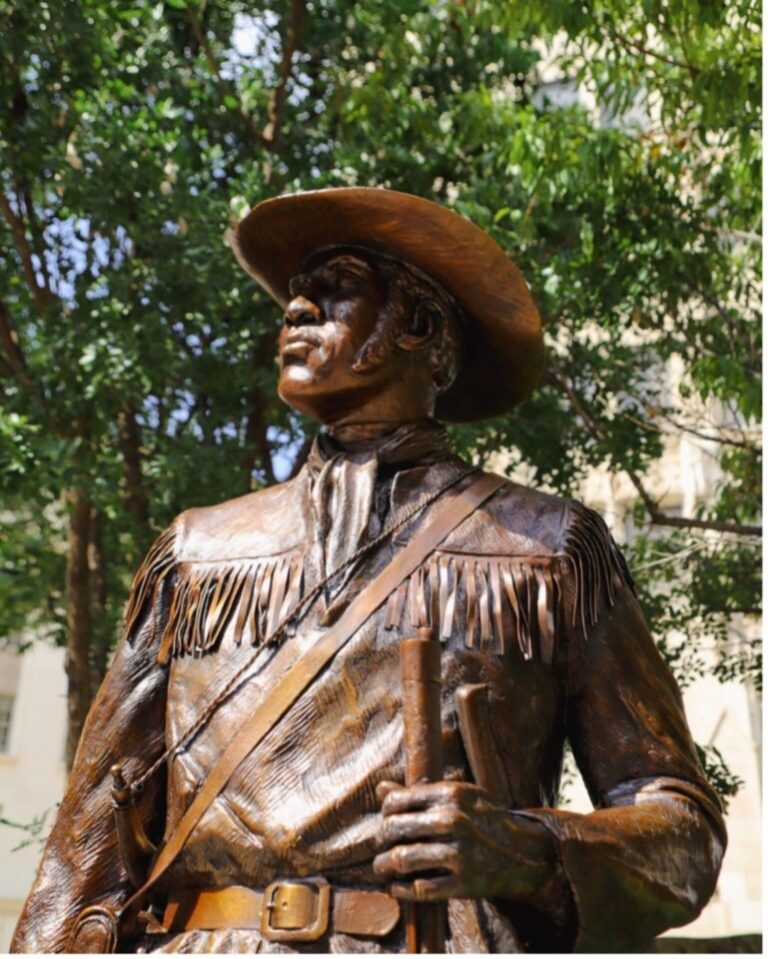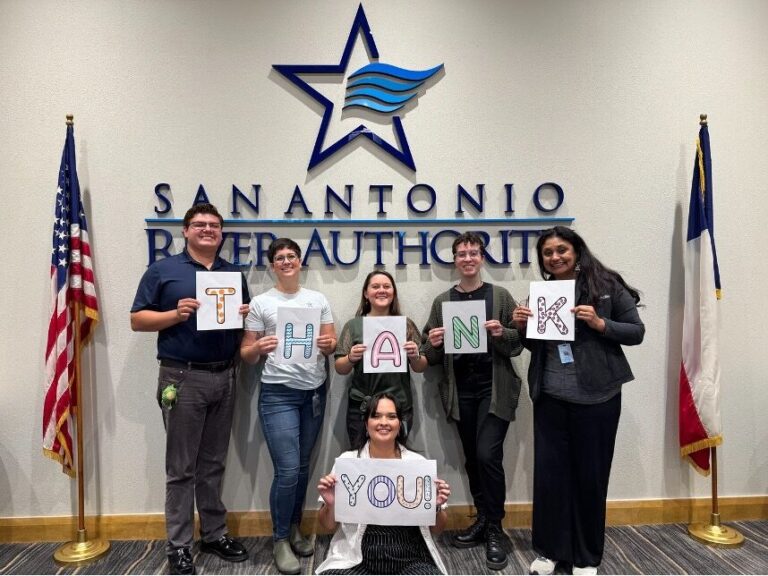You’re out on the Mission Reach of the San Antonio River Walk, enjoying a picnic, and notice a cute mommy duck with her cotton ball looking ducklings are headed your way. What do you do?
You should give them some space while you take some pictures of them, but please, do not reach for that sandwich bread or breakfast taco tortilla to feed them. Let’s rethink why that sign in the park states, “Don’t feed the wildlife!”
It’s normal to want to make a connection to wildlife, to be closer to a unique creature straight out of childhood memories. Sometimes people feel like the duck or other wildlife will go hungry without feeding them by hand. Unfortunately, from the duck’s point of view, something different is happening entirely.
As part of our commitment to safe, clean, enjoyable creeks and rivers, the San Antonio River Authority (River Authority) conducts community outreach to help educate and engage our constituents so they can join us in our efforts. The seemingly compassionate act of feeding the wildlife is actually harmful for them and the environment. Read along as we share how this affects their livelihood and water quality and what you can do to make a positive impact.
Harmful Effects of Feeding the Wildlife
Naturally, waterfowl flock from area to area, foraging for food and utilizing other habitat resources such as water, shelter, and space. Once those resources are exhausted, flocks will move on to the next resourceful area. As lush-green landscapes and meandering waterways are altered with buildings and streets, wildlife face difficulties in locating habitat resources that were once available to them.
Understandably, ducks and geese might visit parks and green spaces as a place to explore for those resources. However, the introduction of an unlimited food supply by well-meaning people can drastically influence their natural behavior to move on. The remaining habitat resources for the fowl (water, shelter, and space) fail to meet the demands with a growing population. What was once a park with healthy waterbodies and plants, can quickly turn into an area covered in duck and goose waste and bare ground.
One of the characteristics of the increasingly unhealthy environment induced by unnatural feeding is the fecal waste that accumulates on land and in the water. The waste can be a driver of disease because it can carry disease-causing pathogens, like Escherichia coli (E. coli) bacteria. Such bacteria and viruses can make both the wildlife and humans sick. In fact, the River Authority’s Basin Report Card conveys the reality of bacteria load impact on the San Antonio River’s water quality. Based on data from the River Authority’s Water Quality – Bacteria Dashboard, there are only 23 water quality monitoring sites out of 72 total sites throughout the San Antonio River Basin meeting the Texas Commission on Environmental Quality’s (TCEQ) Primary Contact Recreation 1 Standard, more commonly known as the swimming standard.
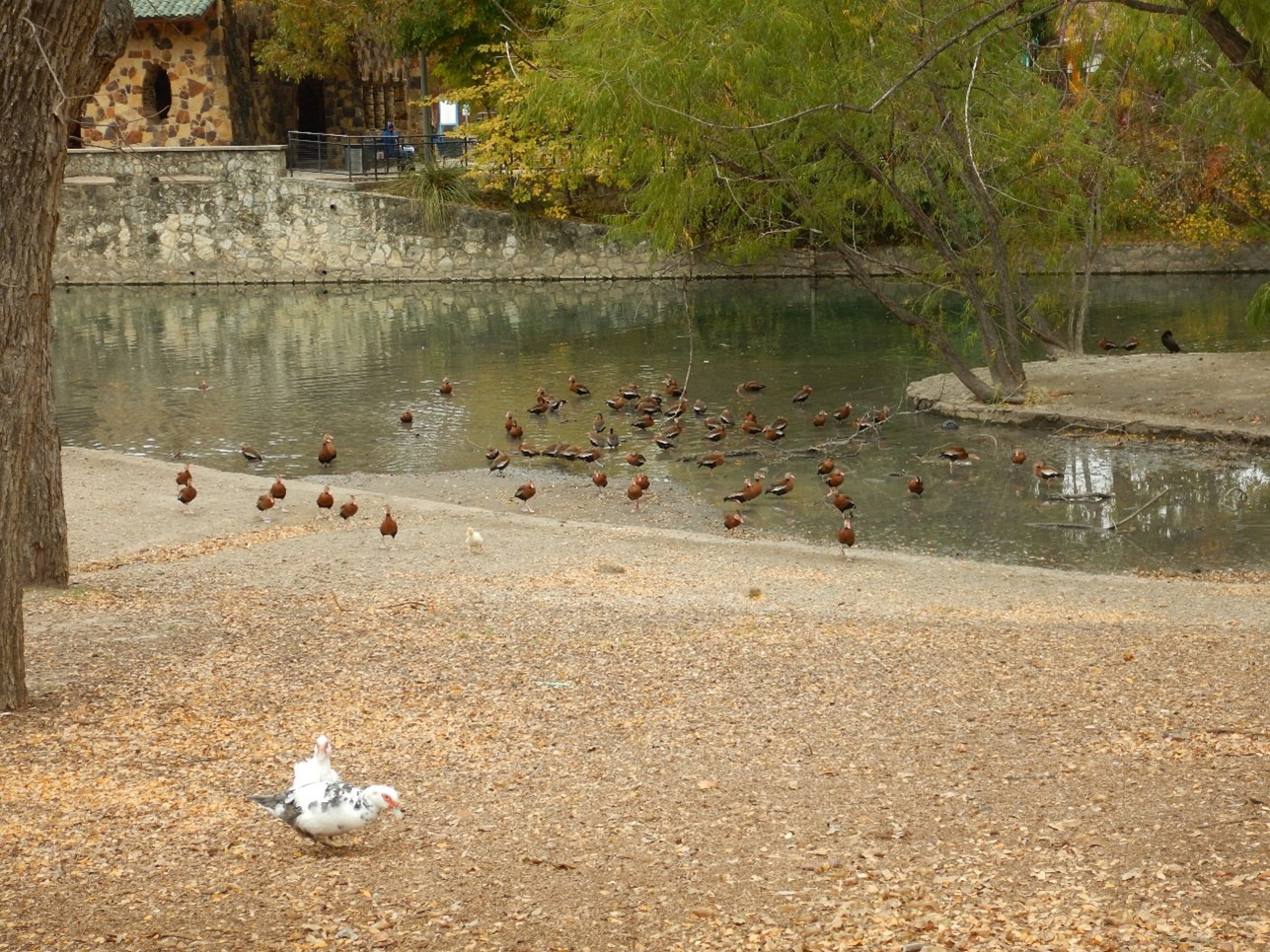
In addition to negatively impacting water quality for human activities like swimming, fecal material from birds is high in nitrogen and phosphorus, which are nutrients. These chemicals act like a fertilizer for aquatic plants and algae. While a natural system can balance a natural amount of these nutrients, the extra food provided by humans to the waterfowl and unchecked population growth introduce an unnatural amount of nutrient from the fecal waste, which may result in excessive algae growth. As the algae uses up the nutrients, it dies off, which opens the opportunity for decomposition by bacteria. As the bacteria reproduce exponentially, more and more oxygen is depleted, causing fish kills, wreaking further havoc on the ecosystem.
The negative impacts of feeding ducks, geese, and other wildlife continue beyond the with water quality problems and ecosystem disruption associated with bacteria and nutrient levels. The lack of native plants along the banks and shorelines of waterbodies, brought about by an over population of birds grazing, can increase erosion. The additional sediment clouds the water, blocking light for the plants, and decreasing visibility for aquatic organisms. Overcrowding of wildlife also results in unnatural behaviors such as increased aggression to both other animals and people. Finally, human food lacks the nutritional requirements for the wildlife, causing even more disease. Indeed, the ducklings and goslings that grow up on human food frequently grow inefficient feathers and bone and are not able to learn how to fly!
What Can I Do to Help?
From the duck point of view, feeding them makes for a very stressful situation. How can these beautiful animals be enjoyed and supported instead?
- Give them their space. Let them be natural.
- Take pictures of them from a distance.
- Use binoculars for a closer look.
- Support migratory wildlife by planting regionally native plants.
- Read about aquatic animals, including ducks.
- Learn more about how neighborhood land pollution impacts waterways after a rainstorm.
- Join the San Antonio River Authority’s River Warrior Volunteer Program to keep learning and supporting a healthy river and ecosystem.
- Become a citizen scientist with the River Warriors to help survey the wildlife in the San Antonio River Watershed.
- Educate others.
We hope that you visit the River Authority’s parks and trails. That sweet mommy duck will do even better with her ducklings as we continue to kindly keep our distance and keep our food in our lunch bag. We look forward to your help creating safe, clean, enjoyable environments for everyone, human and duck alike!

